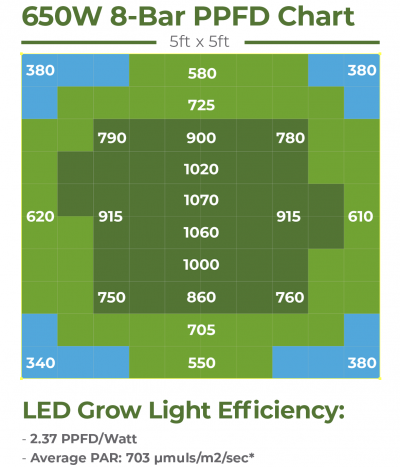Wet trimming, a popular technique among cannabis enthusiasts and cultivators, involves the process of manicuring cannabis buds while they are still fresh and moist after harvest. In this comprehensive guide, we will explore the art of wet trimming, discussing its benefits, techniques, best practices, and additional considerations. Whether you're a seasoned cultivator or a beginner, mastering the art of wet trimming can elevate the quality and aesthetics of your cannabis buds.
Understanding Wet Trimming:
Wet trimming is the practice of removing sugar leaves, fan leaves, and excess foliage from the cannabis buds immediately after harvest, while they are still moist. Unlike dry trimming, where the buds are allowed to dry before manicuring, wet trimming offers several advantages. It streamlines the handling process, preserves the delicate terpenes responsible for aroma and flavor, and reduces the risk of mold or mildew growth.
Benefits of Wet Trimming:
Enhanced Terpene Preservation: Wet trimming minimizes exposure to air, preserving the delicate terpenes that contribute to the aroma and flavor of cannabis. This results in a more aromatic and flavorful final product. The terpenes present in the freshly trimmed buds offer a more pronounced and vibrant experience when consumed.
Streamlined Handling: Wet buds are softer and more pliable, making them easier to handle during the trimming process. Removing leaves and excess foliage becomes more efficient, resulting in a neater and cleaner appearance. Additionally, wet trimming allows for better access to the buds, ensuring thorough manicuring.
Reduced Risk of Mold and Mildew: Trimming the buds while they are still moist reduces the risk of mold or mildew growth. Wet buds are less prone to developing harmful microorganisms, ensuring a safer end product. By removing excess foliage promptly, the chances of moisture retention and subsequent mold formation are significantly minimized.
Wet Trimming Techniques:
Prepare Your Workspace: Create a clean and well-ventilated area for trimming. Ensure your tools, such as trimming scissors or shears, are clean and sharp. Set up a suitable workspace that allows for easy movement and organization during the trimming process.
Harvest at the Right Time: Determining the optimal time to harvest your cannabis plants is crucial for wet trimming success. This timing can vary depending on the strain, desired effects, and cultivation goals. Harvesting slightly earlier than peak maturity, when trichomes are still translucent, can result in higher terpene content and a more stimulating experience.
Remove Large Fan Leaves: Start the wet trimming process by removing the larger fan leaves surrounding the buds. These leaves do not contribute significantly to the potency or flavor of the final product. Carefully snip off the leaves at their base using your fingers or trimming scissors, leaving the buds exposed and ready for further manicuring.
Trim Sugar Leaves: After removing the large fan leaves, it's time to trim the remaining sugar leaves attached to the buds. These leaves often contain trichomes and can contribute to a harsher smoking experience if not properly removed. Trim close to the buds, being careful not to damage or overly expose the trichomes.
Manicure Each Bud: Take your time to manicure each bud individually, removing any remaining foliage or excess material. Pay attention to the appearance of the buds, ensuring that each one has a clean and appealing look. Trim away any protruding leaves or stems that might impact the overall aesthetics of the final product.
Best Practices for Wet Trimming:
Work in Small Batches: To maintain efficiency and prevent excessive drying, it's recommended to work in small batches while wet trimming. This approach allows for better control over the trimming process and ensures that the buds don't dry out too quickly.
Maintain Proper Hygiene: Cleanliness
is crucial during the wet trimming process to avoid contaminating the buds. Wash your hands frequently and sterilize your trimming tools to prevent the spread of bacteria or fungi. This ensures the production of a high-quality, safe end product.
Minimize Exposure to Light and Air: During wet trimming, it's important to minimize the exposure of the buds to light and air. Excessive light exposure can degrade the potency and quality of the cannabinoids and terpenes. Additionally, prolonged exposure to air can lead to oxidation and a loss of aromatic compounds. Work in a dimly lit area and trim one bud at a time to minimize exposure.
Proper Drying and Curing: After wet trimming, it's essential to follow proper drying and curing techniques to further enhance the quality of the buds. Place the trimmed buds in a controlled environment with good air circulation and moderate humidity to allow for a slow and even drying process. Once the buds have reached the desired level of dryness, proceed with the curing process to develop optimal flavors, aromas, and smoothness.
Storage and Preservation: Once the buds are properly dried and cured, store them in airtight containers in a cool, dark, and dry place. This helps maintain their freshness, potency, and overall quality. Consider using glass jars or specialized storage containers that provide an optimal environment for long-term preservation.
Experimentation and Personal Preference: Wet trimming and dry trimming are two different approaches to achieving well-manicured cannabis buds. While wet trimming offers certain advantages, some cultivators prefer dry trimming for different reasons. It's essential to experiment and find the method that works best for your specific preferences, strain characteristics, and desired end product.
Conclusion:
Wet trimming buds off the stem is a technique that offers various benefits for cannabis cultivators. By understanding the advantages, techniques, and best practices of wet trimming, you can optimize the quality and overall experience of your cannabis buds. Whether you're seeking enhanced terpene preservation, streamlined handling, or reduced risk of mold, wet trimming provides an effective solution. Incorporate these techniques and best practices into your cultivation process to achieve visually appealing, potent, and flavorful cannabis buds.
Note: The information provided in this article is for educational purposes only and should not be considered as professional advice. Adhere to local laws and regulations regarding cannabis cultivation and consumption.
















